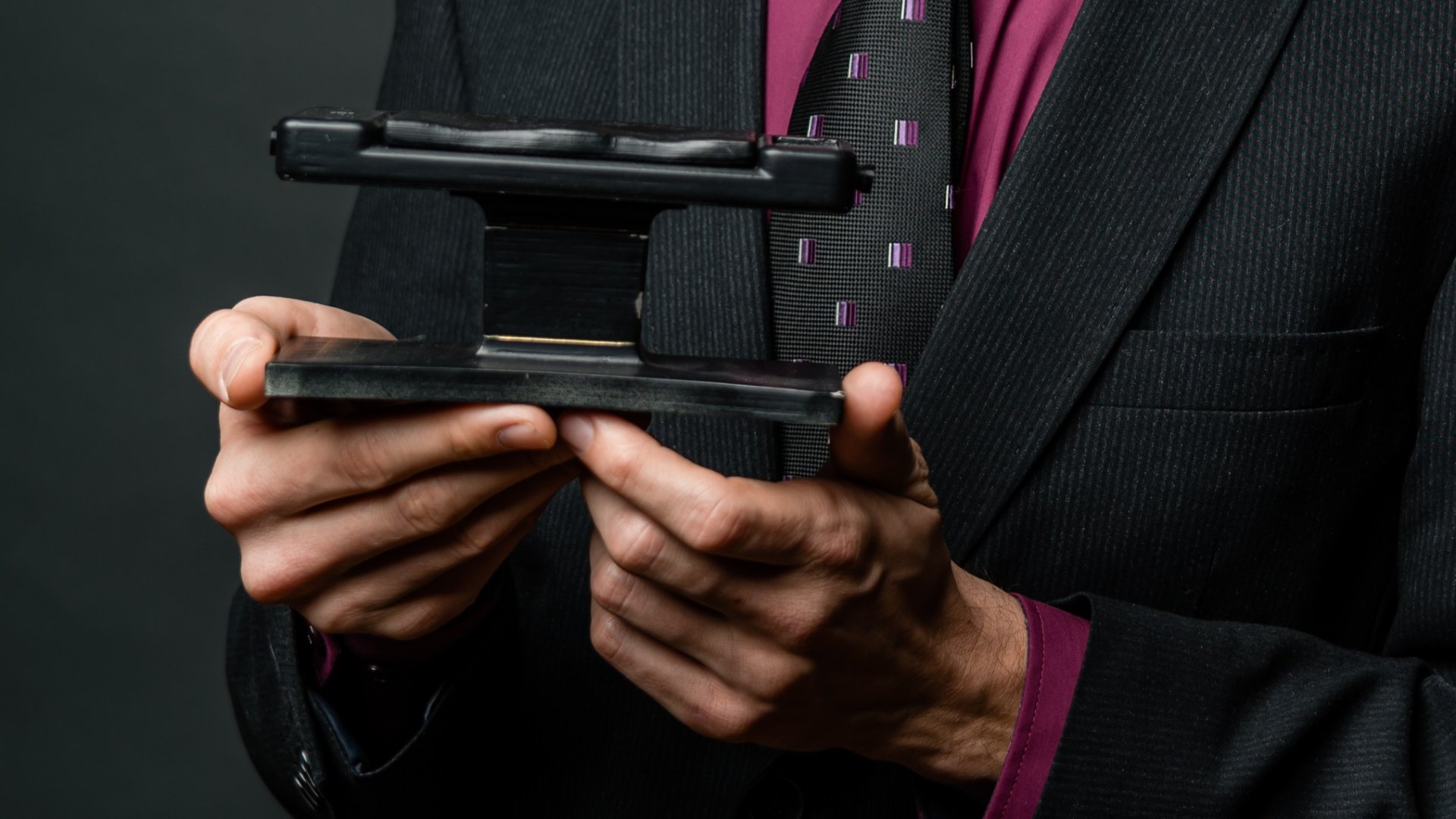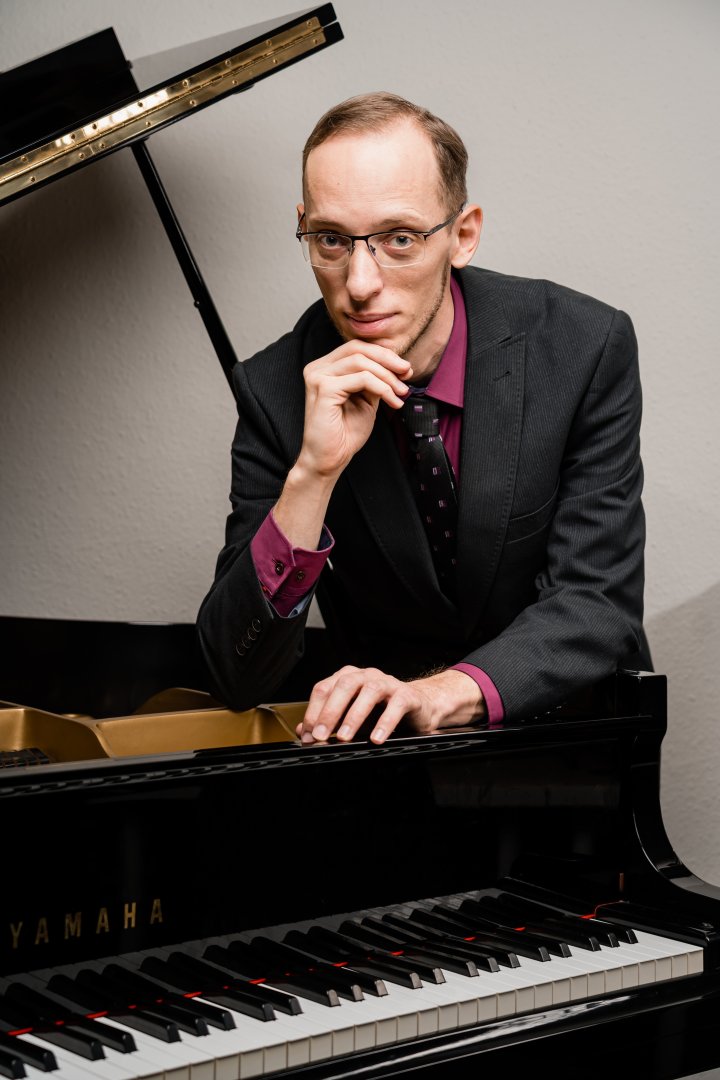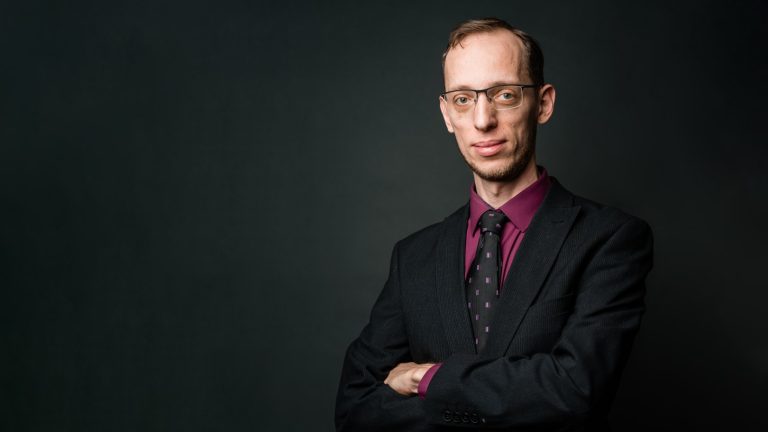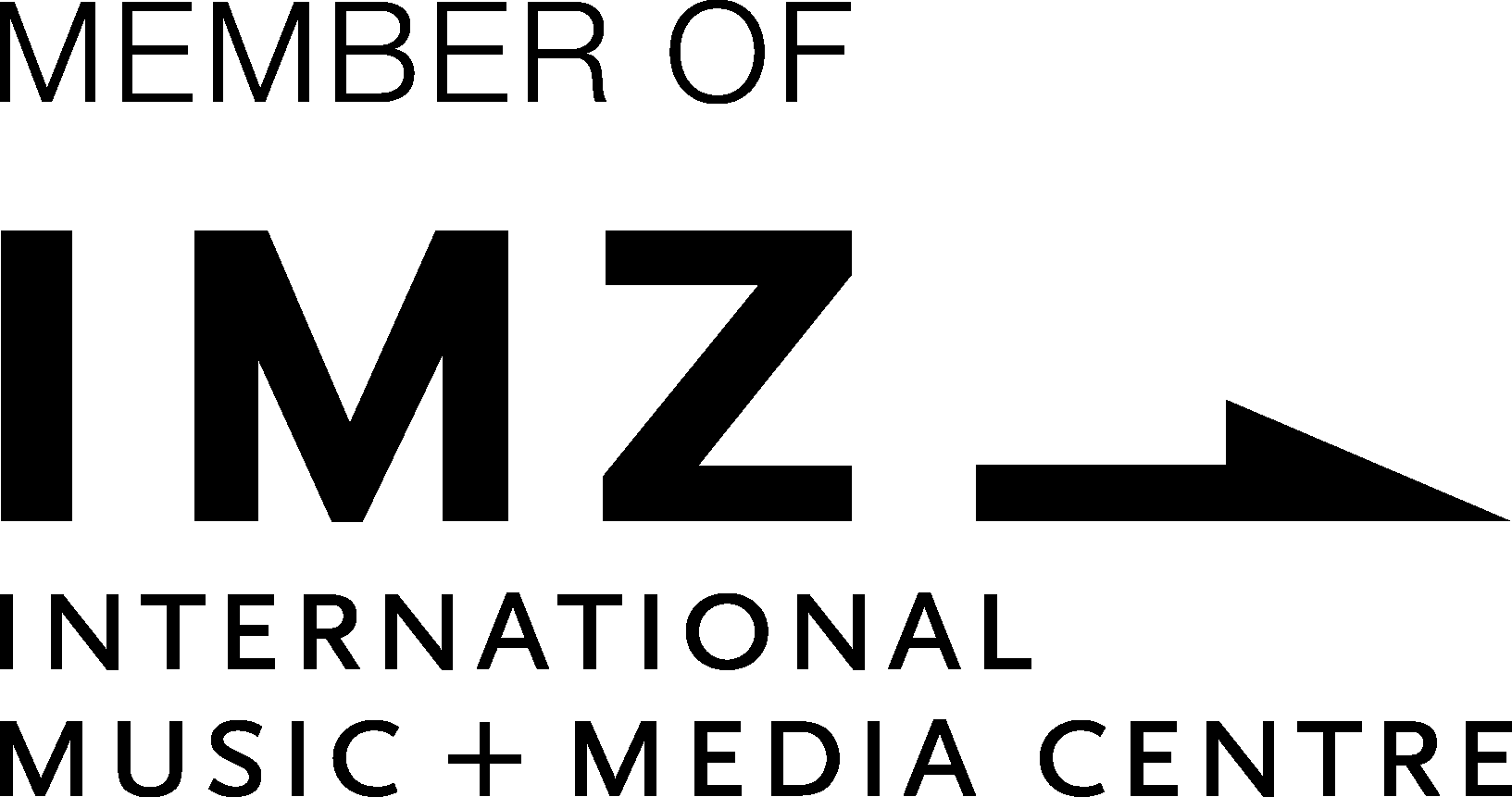“There is no art without technique, and technical advances are an art in themselves: Both are creative acts”, explains pianist Ádám Péterváry, who has been fascinated by computers and technology since childhood.
Péterváry and his team recently launched a promising start-up to market their first product, a “smart” piano bench. But how can innovation and tradition be combined? And how does this new bench help pianists overcome technical difficulties?
– Let’s cut to the chase: What was wrong with existing piano benches?
– Pianists depend on two extremely important tools: the first is the instrument itself, and the other is the piano bench. They’re equally important, but while the former is obviously indispensable, far less attention has been devoted to the latter for as long as concerts have been given. The most common problems I’ve encountered as both a teacher and a musician include inconvenient adjustment mechanisms, poor quality, and a cumbersome, non-ergonomic design.
– What does this mean for pianists in practical terms?
– Until now, pianists have had to consider two important parameters: the height of the bench and its distance from the piano. As pianists, I believe we create a third parameter: movement in parallel with the piano keys. From an ergonomic point of view, I was forced to acknowledge that the problem doesn’t just lie with the piano bench: the piano itself is a badly designed instrument, considering the extraordinarily complex and exacting movements and fine motor skills that are required of pianists on a daily basis, often for hours at a time.
The fact that everything happens on a simple “stool” merely compounds the problem. Because the seat plate on our new bench has been designed to slide alongside the piano, the tests we have carried out so far suggest that in future, pianists can look forward to an entirely new kind of movement that is substantially easier, more efficient and more ergonomic.
Seated on the bench, pianists will be able to maintain an optimal arm angle and straight back as they play, allowing them to experience a new kind of movement sensation. This can ultimately lead to greater control, a more intense sound, improved sound quality, fewer back problems, and potentially shorter learning times.
As I’ve already mentioned, bench height is another very important individual parameter, which has an impact on performance as a whole. All pianists will be familiar with the nightmare of walking on stage and being confronted with an unsuitable piano bench that’s set at the wrong height. In the worst case, having already warmed up to play, they’re obliged to start twisting knobs, trying to adjust the bench haphazardly; in the best case, if the bench has a hydraulic lever-operated mechanism, they might at least hope to chance on their usual seat height with slightly less effort. When it comes to concert performances, adjustments of this kind have to be carried out at different instruments that may vary in structure. To address this problem, we’ve developed a built-in electronic self-adjusting system,
ensuring that anyone who uses a Péterváry bench will be able to adjust it to their usual height immediately, at the touch of a button and to an accuracy of a tenth of a millimetre, whatever kind of piano they’re sitting at, and wherever they are in the world.
It’s all extremely simple and secure. In addition, our aim was to design a bench that offers the highest level of comfort and quality while still taking the need for movement into consideration.
– How has the world of technology, digital devices and smart functions contributed to product development?
– Although I’m essentially a musician, I do perhaps have a slight advantage in this respect. Alongside my love of music, I’ve been fascinated by computers and technology ever since childhood, and I’ve devoted a fair amount of energy into finding out how to use them. When I first came up with the idea of developing a new piano bench, it went without saying that we’d make use of what are now everyday electronic solutions when designing its innovative functions. Things like Bluetooth, NFC, and mobile applications. Fortunately, it proved possible to match the technology to the problem, since the partly electronic control system and smart functions are integral features of the revolutionary height adjustment mechanism.

– Have you done any consumer research in relation to launching the bench on the market?
– Yes, we’ve carried out market research of course, although in this respect we found ourselves up against an interesting problem: market players offering more or less similar products are not quite at the stage of introducing significant innovations in this field. The piano benches currently being offered by prestigious instrument manufacturers, for example, are merely simple stools that sport their brand name, while more innovative and better-quality piano benches are produced for them by smaller manufacturers. Everyone is offering pretty much the same products, with differences in quality that are reflected in the corresponding price range. Since our piano bench, with all the functions it offers, represents an entirely new product category, its launch on the market represents both a huge advantage and a significant challenge. In responding to this challenge, we naturally have to think about product protection, too: we’ve already filed an international patent application for the bench, which is currently in force.
– Who is your target audience?
– Our most important customers are ultimately pianists, of course, although it’s equally important for us to target the main centres of concert life. I’m thinking here of concert halls, opera houses, or any venue where pianos are used, anywhere in the world. As a teacher, I’m of course convinced that the bench will be revolutionary in terms of teaching, which means that educational institutions, professional and amateur piano students, and the teachers who teach them are another major market for us.
– According to your website: “Our mission is to combine the familiar, conservative and distinguished elements of the classical music tradition with the comfort, efficiency and advantages offered by state-of-the-art knowledge.” Is this a difficult mission to fulfil? How conservative and exclusive is the classical music profession?
– This has been one of our biggest dilemmas. Professional piano playing is structured according to a set of values and the routines that uphold them, which are based on longstanding, centuries-old traditions. The industry that serves the art of piano playing is essentially also one of its main drivers. So it’s an extremely conservative domain, although my impression is that things have recently begun to relax to some extent. I’m thinking here about score reading on tablets, for example, although I might also mention female performers’ growing freedom to assert their individuality on stage, even in terms of the way they dress.
– What were some of your most important considerations when launching your start-up?
– Although “start-up” has become a trendy word, a lot of people have no idea of the risks involved or the specific competences that this kind of enterprise demands. Since the main point is to achieve rapid growth with a scalable product that is also suitable for the international market, it requires the raising of significant capital right from the word go. For this, you need to know how to convince an investor that your concept is marketable and that you have an appropriately trained team assembled to develop it. Fortunately, this is something we’ve managed to do successfully; it’s been really gratifying to “see the penny drop” so often after pitching our piano bench concept. I’m proud to say that we’ve put together a team of first-rate, highly trained and dedicated colleagues. The framework and background environment for the project as a whole are provided by one of the most active investment companies in Europe, Hiventures Zrt., which is part of the Hungarian Development Bank group. We received entry-level funding from its Pre-seed Investment Programme, which I believe offers the most favourable constructions and conditions currently available on the market for the realisation of Hungarian innovations and ideas.

– You are both a pianist and a teacher. Art or technique? Which do you consider more important?
– That’s an extremely interesting question. When people think of artists, they perhaps tend not to imagine them as being enthralled by technology. But I’m fascinated by both, separately and in relation to one another. After all, there’s no art without technique, and technical advances are an art in themselves, if pursued at the highest level. Both are creative acts. Interestingly, we talk about “piano technique” in the profession. I’ve long been interested in the truly technical and scientific aspects of piano playing, and comprehensive research in this area is included in our company’s plans. This covers the biomechanical analysis of piano playing as complex movement, a scientific response to the respective orthopaedic and health problems, as well as the exploration of the mechanisms of piano playing as an integrated process involving the central nervous system.
– And what about your plans for the future?
– We’re fortunate to have a hugely creative and innovative team, so we have plenty of plans to add to our portfolio. Some have been there from the very beginning, while others emerged while developing the bench. Our goal is to assist musicians by providing them with technical and scientific tools, and since this is a currently untapped field, the prospects of huge. While I’m keen to share with my fellow pianists the pleasure it’s given me to come up with this bench and use it, I see each instrument as a new area of research, and at the same time a new market. We plan to expand our product range as soon as possible to include other instruments, since the science behind the bench looks to be marketable in quite different applications. As a company, however, we’ve adopted an expressly human- and value-centred approach, and our aim is to become a market leader selling products that give our customers a sense of pleasure, satisfaction, and appreciation.











